Are you unsure whether you should visit Portugal in March or not? Then this guide is exactly what you need to help you make this decision!
With its beautiful beaches and sunny days, many people think Portugal is best enjoyed during the Summer. But, actually, March is also a fantastic time to explore this charming country.
One of the main advantages of visiting in March is that it’s less crowded than during high season. That means more tranquility to enjoy popular attractions such as Castelo de São Jorge, in Lisbon, which is usually bursting with tourists, without feeling overwhelmed by the crowds.
Of course, it also means shorter queues and more accommodation options (which, by the way, are also way cheaper than during the summer!).
Not only that, but Portugal this time of year offers very pleasant weather conditions, with mild temperatures and lower chances of rain compared to previous months, since March is when winter ends and spring begins.
Are you still not sure whether March is the ideal time for your Portugal trip? Don’t worry, I’ve got this! In this guide, I’ll tell you everything you need to know before making your decision. Trust me: you’ll leave this page ready to book your flight!
It doesn’t matter whether you want to stroll along towns like Lisbon or Porto, hike through national parks such as Peneda-Gerês or Serra da Estrela or even explore historical sites like Sintra or Évora, March is an amazing time to do all that and much more!
Index
- Why visit Portugal in March?
- Weather in Portugal in March
- Monthly weather
- What to pack?
- Exploring Portugal in March
- Things to do in Portugal in March
- Planning your trip
- More tips
- How to get around in Portugal?
1. Why visit Portugal in March?
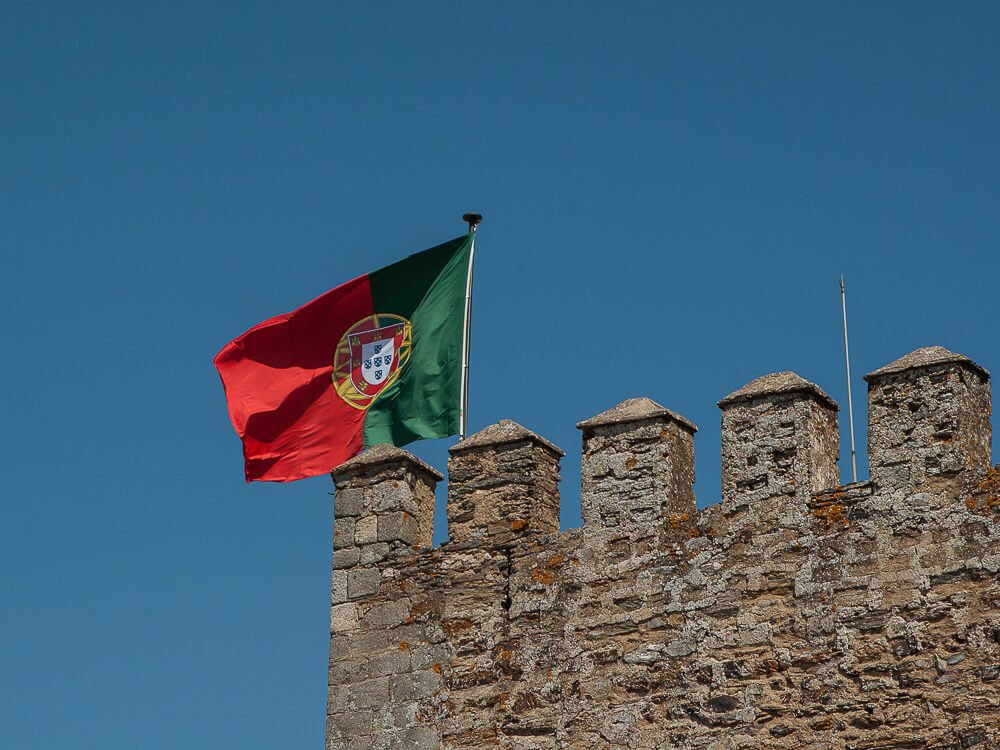
Now, you may be wondering: why visit Portugal in March when I could go during the summer?
And truth is, as much as I love the Portuguese summers, it can get a bit too crowded for my taste. And the extreme temperatures don’t help either! I don’t know about you, but I’d much rather walk around Lisbon in slightly cooler temperatures than in scorching heat of 104°F (40°C).
The fact that March offers mild temperatures and fewer rainy days makes it, in my opinion, the most pleasant time to visit Portugal. Oh, and if you’re like me and can’t resist outdoor activities, rest assured that there are some amazing hikes you can go on in March. But more on that later!
Besides that, March has low chances of rainfall, especially in the southern regions, and is when the days start getting longer, which means you’ll have more daylight hours to explore all the top tourist attractions without worrying about inclement weather.
And, because March in Portugal is low season, you’ll find more affordable plane tickets and accommodations, allowing you to make the most of your travel budget. And, of course, you’ll encounter fewer tourists compared to summer, so you’ll feel like a local as you wander through charming cobblestone streets and soak in Portugal’s beauty.
2. Weather in Portugal in March: a comprehensive guide

Weather overview and average conditions
Portugal’s climate varies a lot depending on the region. As a rule of thumb, the northern parts of the country tend to be cooler and wetter, while the south is warmer and drier.
That’s because the north presents a temperate climate, with annual averages between 8°C to 12°C (46°F to 54°F). The south, on the other hand, has a Mediterranean climate, characterized by hot and dry summers, with annual averages between 16°C to 18°C (61°F to 64°F).
In March, as winter transitions into spring, Portugal experiences pleasant weather conditions with mild temperatures throughout most of the country.
However, the temperature range can be quite large, with an average high of around 68ºF (20°C) and average low of approximately 45°F (8°C). As a famous Portuguese saying goes, March is a month of winter mornings and summer afternoons.
The northern regions of Portugal, such as Porto, tend to be slightly cooler during this time, with average high temperature of 61°F (16°C) and average low of 43°F (7°C).
Lisbon and central areas present milder temperatures ranging from about 12°C (53°F) during daytime. As you venture into southern regions like Algarve or Madeira, you’ll encounter warmer temperatures averaging around 15°C (59°F) during daylight hours.
Rainfall in Portugal
Understanding the rainfall and humidity in Portugal is essential when planning your visit. After all, no one wants to be holed up in the hotel because of bad weather, right?
The good news is that there are around 9 days of rain throughout the month of March in Portugal, so chances are you’ll enjoy a lot of sunny days!
In Lisbon, the average rainfall is approximately 2 inches (50mm), while in Porto, located in the northern part of Portugal, it reaches around 3.54 inches (89mm).
In terms of humidity, March in Portugal sees an average level of around 66%. This moderate humidity adds a pleasant touch to the overall climate.
Sunshine in Portugal
Portugal has a well-deserved reputation of being the sunniest country of Europe, with an average of 300 sun-filled days throughout the year. That’s a lot, right?! This abundance of sunshine is exactly what attracts so many tourists in the first place.
Even though you won’t witness the longest days in Portugal (that would be in June, when there can be up to 15 hours of sunshine in a day!), you can still look forward to soaking up 7 hours of daylight.
Towards the end of March, Portugal turns its clocks forward by one hour for Daylight Saving Time. This means more daylight hours for you to relish the country’s natural beauty and cultural treasures under the sunlight.
3. Monthly weather in Portugal
Now, let’s talk about Portugal’s weather patterns.
The coldest and wettest months are November, December and January. In February and March, temperatures start rising and rainfall decreases. April and May are typical spring months, with nice weather and low chances of rain. June, July and August are the hottest and driest months. Temperatures start lowering and rainfall increasing in late September and October.
But, to make it easier for you to visualize, check out these graphs:


4. What to pack for Portugal in March?
Traveling to Portugal in March means you should be prepared for unpredictable weather and drastic temperature changes throughout the day. So, I highly recommend that you prioritize comfort and practicality over fashion when choosing what clothes to bring.
I know, I know… But trust me, when it comes to traveling, there’s nothing more fashionable than being comfortable! To help you decide what to pack, here are my tips and list of essential items:
- Forget about heels and flip-flops! Instead, opt for comfortable non-slip shoes that will allow you to explore uneven trails and cobblestone streets with ease.
- Because of the temperature fluctuations, it’s a good idea to pack a mix of warm clothes and versatile layers that can easily be added or removed as needed. Lightweight sweaters are a must to provide some extra warmth during cooler mornings and evenings, as are scarves and gloves.
- As March can still see some rainfall, bring an umbrella or raincoat so the rain doesn’t get in the way of your exploring.
- Don’t forget to pack T-shirts, shorts, and jeans to comfortably explore the city during the warmer afternoons.
- Since you’ll be exploring pretty much all day long, I recommend that you bring a day bag spacious enough to fit all your travel essentials, such as: water bottles, snacks, sunscreen, a light jacket, camera, power bank, and any other personal belongings you may need.
- It’s also a good idea to pack an international charging adapter suitable for Portugal’s electrical outlets so you can easily charge your electronics.
- Bring photocopies of important documents such as passports and IDs. And remember to keep these copies stored separately from the originals in case of loss or theft during your trip.
5. Exploring the wonders of Portugal in March

Top destinations in March
As I’ve mentioned before, March is a fantastic time to visit Portugal before the peak tourist season begins. Now, I’ll tell you about destinations you cannot miss during this time of year in Portugal. Check it out:
Lisbon
One of the most captivating destinations this time of year is Lisbon. There, you’ll get to explore its charming historic neighborhoods such as Alfama and Chiado; indulge in mouthwatering Portuguese delicacies, such as sardines, cod fish and pastéis de nata; and visit attractions such as the Belém Tower and St George’s Castle. All without having to deal with overwhelming crowds.
Porto
Another city worth exploring is Porto, renowned for its historic architecture and world-famous port wine. This time of year is ideal for walks along the Douro River, and visiting attractions such as Clérigos Tower (for an amazing view of the city landscape), Majestic Café (a beautiful café with a distinctive Art Nouveau façade) and Carmo Church (known for its walls adorned with traditional blue-and-white Portuguese tiles).
Nazaré
For those seeking adventure, head to the town of Nazaré, famous for its giant waves that attract professional surfers from all over the world. March is the last month to witness these towering waves until October, so make sure to add this unforgettable experience to your list of things to do in Portugal!
Just remember that these waves are not suitable for beginners or intermediates. You really have to be a seasoned surf pro to try your hand at them! If that’s not your case, just join the spectators and enjoy the show (it will be worth it either way!).
Algarve
Heading south, the Algarve is another great destination option for March. There, you’ll find a pleasant climate and lots of beautiful beaches. I recommend taking some time to enjoy coastal towns like Lagos and Faro before they become bustling summer hotspots.
Douro Valley and Alentejo
And, if you’re a wine enthusiast, visit the enchanting Douro Valley or go to the vineyards in the Alentejo region. Both regions are known for their delicious wines and offer wine tasting experiences that will definitely capture your heart.
Portugal’s hidden gems
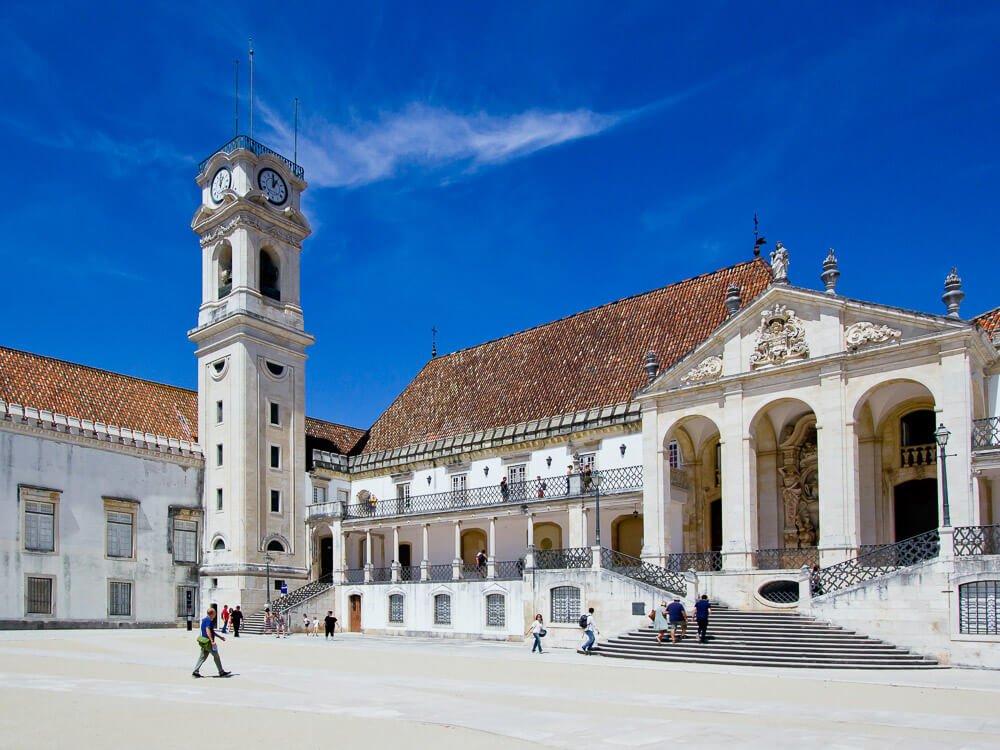
There are a lot of hidden gems that are often overlooked by tourists in Portugal. Here are my top picks:
Almada
Almada is a charming town just 15 minutes away from Lisbon. It offers stunning views of the city skyline and the iconic Cristo Rei statue. I recommend taking some time to explore its quaint streets, visit local shops and cafes, or take a leisurely stroll along the beautiful beaches.
Óbidos
The medieval village of Óbidos in Leiria is another treasure worth discovering. Enclosed within ancient castle walls, this village invites you to wander through its narrow cobblestone streets and admire its well-preserved architecture. Don’t miss out on tasting the traditional cherry liqueur known as “ginjinha” while exploring this enchanting place.
Coimbra
Coimbra is home to one of Europe’s oldest universities and gives off an academic charm that can be felt throughout the city. You can immerse yourself in history as you walk through Coimbra’s historic center, explore its renowned library, and soak up the refreshing student atmosphere that permeates every corner.
Setubal
Setubal is a traditional Portuguese town located about 50km away from Lisbon. It is known for being one of the best places to indulge in fresh seafood delicacies straight from the Atlantic Ocean. Enjoy mouth-watering dishes at local restaurants or venture out to explore nearby natural wonders such as Arrábida Natural Park.
6. Things to do in Portugal in March
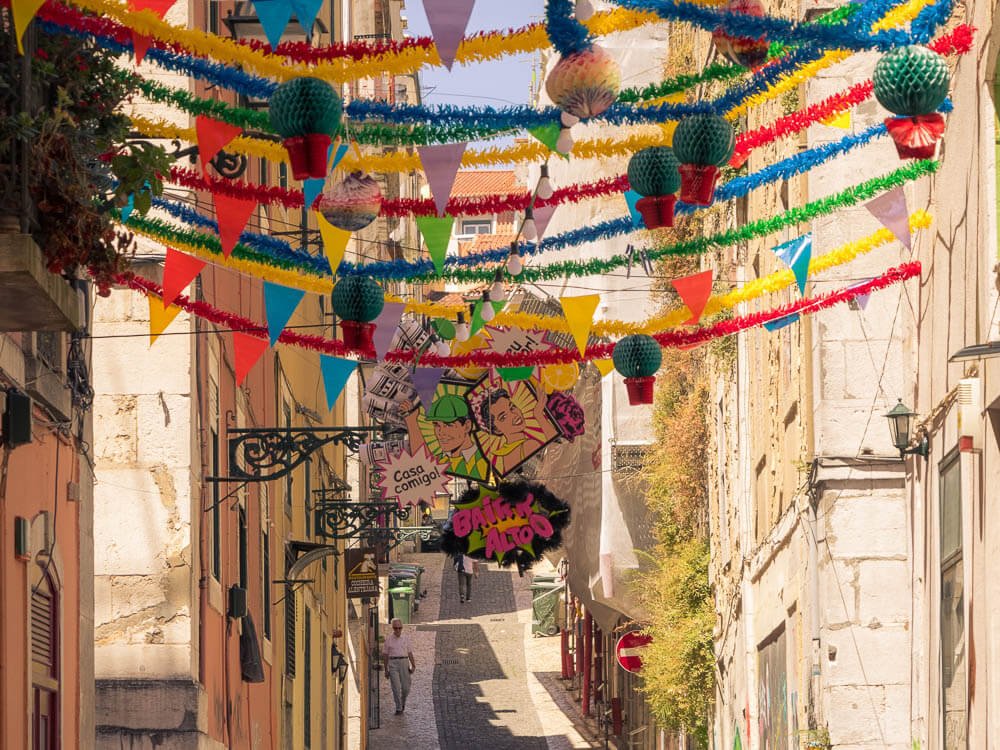
Portugal in March has lots of exciting events and festivals, from traditional fairs that showcase the country’s rich heritage to film festivals. Now, join me and find out the best activities for your trip:
- Feira do Pão Quente e Queijo Fresco (Hot Bread & Cheese Festival): this delightful celebration of warm bread and fresh cheese takes place in Vaqueiros, in the Algarve region, offering visitors the chance to savor these traditional delights.
- Feira dos Enchidos: if you love sausages, you can’t miss this one! The Feira dos Enchidos happens annually during the first weekend of March in Monchique, in the Algarve, and honors Portuguese sausages, featuring a variety of regional specialties for you to sample. There, you can explore local delicacies while enjoying live music performances.
- Almond Blossom Festival: taking place in Bragança, this event is held over a weekend and showcases blooming almond trees amidst stunning landscapes. And, while you witness nature’s beauty, you’ll be able to taste traditional Portuguese cuisine and exquisite regional wines.
- Feira de Março: held in Aveiro from late March to late April, this is a historic festival that combines funfair attractions with cultural experiences, such as folk concerts and rock performances.
- Óbidos International Festival of Chocolate: a true paradise for chocoholics! This festival offers chocolate tastings, workshops, cooking demonstrations and even incredible chocolate sculptures.
- Lisbon Half Marathon: held on the third weekend of March, this event brings in thousands of athletes from all over the world to run its 21km route, which starts at Bridge Vasco da Gama and finishes at Praça do Comércio.
- FIESA (International Sand Sculpture Festival): located in Pêra, this unique festival showcases impressive sculptures created out of 35,000 tons of sand by artists from all over the world. It’s an unforgettable experience!
- A Monstra Festival: held in Lisbon, this festival brings together animated films and other forms of film and media. You can explore the diverse world of animation through screenings, workshops, and exhibitions that highlight the uniqueness of this genre.
- Futurália: an exhibition in Lisbon dedicated to youth, education, and employment. A must-visit for those seeking educational and employment opportunities or simply looking for inspiration. There, you’ll discover various educational institutions, vocational training options, career guidance resources, and much more.
- Porto Celtic Festival: this lively festival celebrates Celtic music from across Europe with performances by renowned musicians. An authentic celebration ideal for those looking to enjoy some traditional melodies.
And that’s not all! If you’re a fan of sporty activities, you’ll be delighted to know that Portugal has a very diverse terrain that makes it ideal for hikers. You can go on renowned trails such as Rota Vicentina in Algarve, explore the Douro International Natural Park and the Peneda-Geres National Park, located near the border between Portugal and Spain.
Meanwhile, rock climbing enthusiasts can head to Sintra-Cascais Natural Park, which boasts an abundance of bouldering areas featuring different types of rocks, so you can challenge yourself while enjoying beautiful panoramic views.
7. Planning your Portugal trip in March
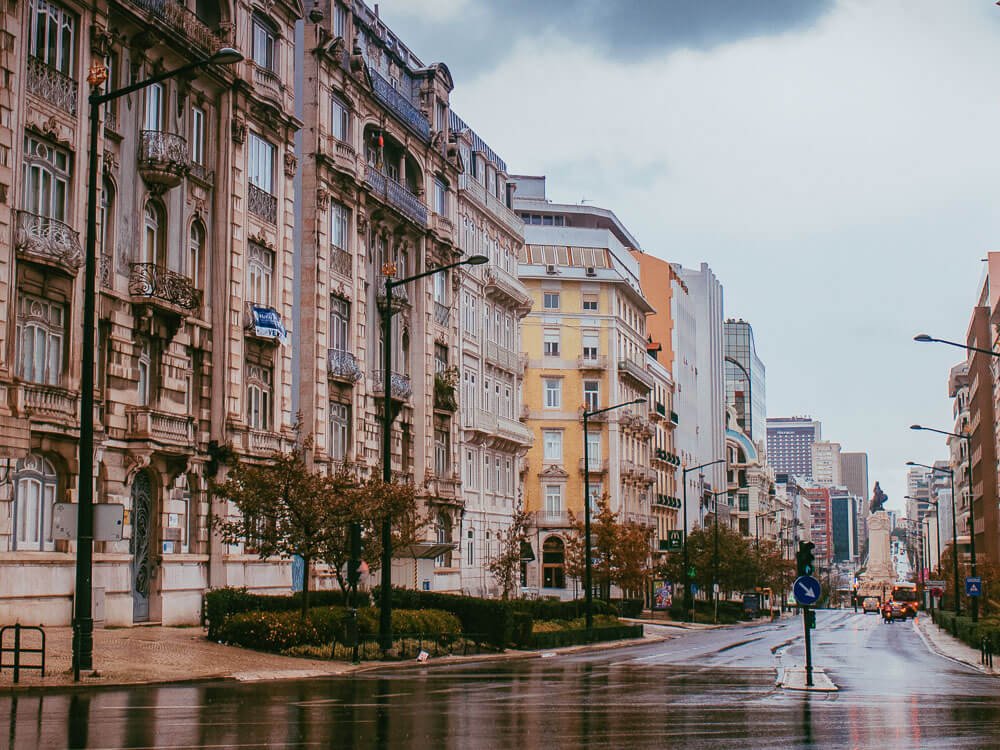
How long to stay in Portugal + itinerary idea
There’s no right or wrong when it comes to how long to stay in Portugal. Personally, I recommend staying at least one week to fully experience the country. But, if you have some time to spare, staying for 10 days is even better, since it gives you more time to explore at your own pace.
To help you get started, I’ll share my recommended one-week itinerary. Just keep in mind these are suggestions based on my personal experiences! Feel free to tweak them to suit your specific needs and interests.
Also, it’s always a good idea to allow some room for spontaneity when visiting Portugal. Maybe you’ll decide to go on a daytrip on the spot, or maybe you’ll find a hidden traditional village and wish to spend the afternoon… Who knows? It’s always nice to be surprised by Portugal’s hidden gems!
Now, without further ado, let’s get into the itinerary!
Day 1
You’ll start your trip in Lisbon and explore the city for 2 days. Begin your first day by exploring São Jorge Castle and then head to the Parque das Nações, where you can visit the amazing Oceanário de Lisboa.
In the evening, head to Chiado and Bairro Alto, the two most famous neighborhoods in Lisbon. To get there, take the Elevador da Gloria from Restauradores Square.
Day 2
On your second day, go to Belém, where you’ll be able to visit the Jerónimos Monastery and Belém Tower. And don’t even think about leaving without going to Pastéis de Belém! There, you’ll taste the most traditional (and delicious) pastéis de nata (custard pies). For the afternoon, I recommend booking a sightseeing tour.
Day 3
For your third day, go on a day trip to Sintra, about 30-minutes away from Lisbon. Your first stop there should be the Moors Castle, a medieval castle built in the 8th century.
From there, head to Pena Palace, a romantic-style castle that looks like it’s been pulled straight out of a fairytale with its colorful walls and beautiful green areas.
Then, go to Cascais, where you can enjoy some delicious seafood for lunch. Then, go to Praia da Rainha to snap some beautiful photos and to the City Hall in Praça 5 de Outubro. To finish up your day, head to Guincho Beach to see the sunset.
Days 4-5
For your 4th and 5th day, you can visit the Chapel of Bones in Évora, see the giant waves in Nazaré and then head to the Óbidos Castle for an unforgettable medieval experience.
And, of course, you can’t forget to take some time to explore Coimbra, where you’ll find the oldest university in Portugal.
Day 6
For your last two days, you’ll head to Porto. There, visit the beautiful Livraria Lello, the Cais da Ribeira (Riverside Pier) and the Chapel of Souls, which is covered in the traditional blue and white Portuguese azulejos (tiles).
If you want to see some more of the famous azulejos, go to the Church of St. Ildefonso and São Bento Railway Station.
Day 7
Of course, you can’t leave Porto without trying some port wine, right? So, on your last day, go on a Port wine cellar tour, which are usually held in Vila Nova de Gaia, and taste some of this traditional wine.
You can also go on the Teleférico de Gaia (Gaia Cable Car) for some amazing views, or the Sé do Porto (Porto Cathedral), which offers an amazing city view.
From there, you can head back to Lisbon to catch your flight back home knowing you’ve seen some of the best Portugal attractions has to offer!
8. More tips for your Portugal trip in March

Travel insurance
I’m sure you don’t want anything spoiling your Portuguese adventure, right? That’s why I always recommend getting good travel insurance before any trip!
The key to finding the best insurance for your needs is researching different companies and policies. That way, you can find the best deals while still getting comprehensive coverage against incidents such as luggage loss, theft and even health issues.
That way, you can enjoy your trip without any worries!
Safety tips
Even though Portugal is a relatively safe country, it’s best to take certain precautions to avoid undesirable situations and ensure your safety. Here are my tips:
- Stay vigilant against petty theft, especially in crowded areas or on public transportation where pickpocketing incidents can occur. Keep your belongings close and avoid displaying valuable items like cameras or smartphones.
- Familiarize yourself with local emergency numbers for police, medical services, and any other necessary assistance.
- Keep copies of important travel documents (such as passports) separately from the originals. Make sure to have digital backups for easy access if needed.
- Know the location of the nearest embassy or consulate from your home country. They can be of help in case of lost passports or other emergencies.
9. How to get around in Portugal?
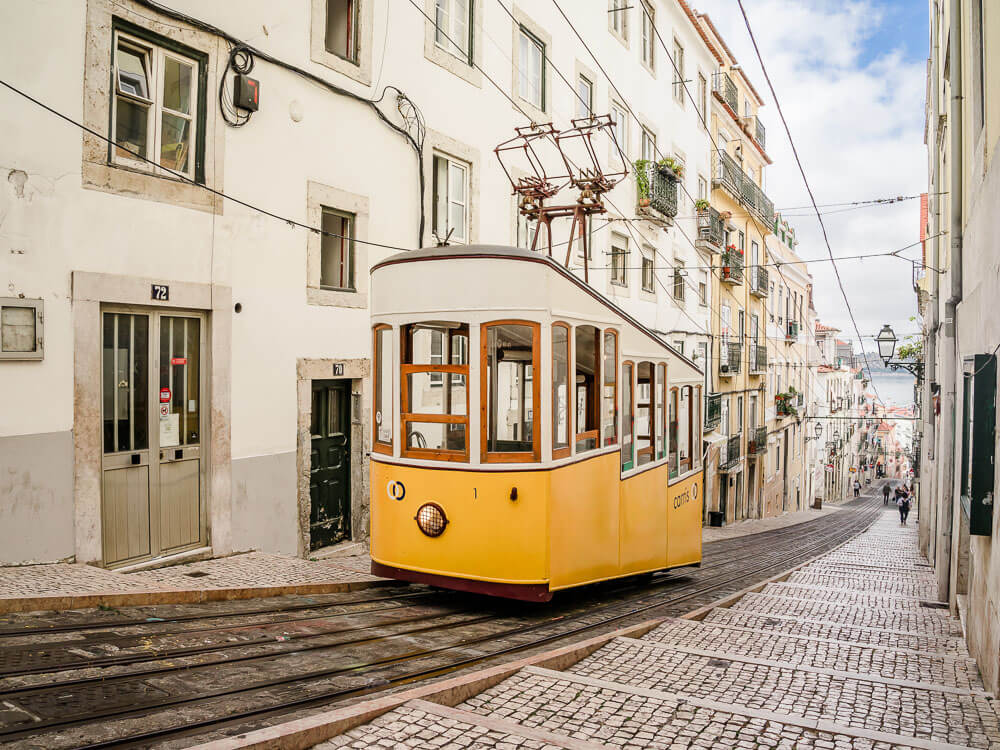
The number one option for getting around Portugal is renting a car. Not only is it convenient, but it also gives you room to be more flexible, especially if you’re planning on exploring multiple regions or are prone to spontaneous plans.
You’ll notice that Portugal has well-maintained roads that make it ideal for road trips. However, keep in mind that parking in major cities can be challenging and may incur additional costs.
If you don’t want to drive, though, Portugal also has an extensive train network that offers a comfortable way to travel while enjoying scenic views. The only catch is that train travel can be a bit more expensive, and you may need to book tickets in advance.
A more budget-friendly option is traveling by bus. The buses are frequent and reach both major cities and smaller towns throughout the country, and many companies offer comfortable vehicles with air conditioning.
Final thoughts about Portugal in March

As you’ve seen, March in Portugal is the perfect time to immerse yourself in its beauties, traditions, and heritage without being overwhelmed by crowds.
Not only will you have a more authentic experience, but you’ll also be able to snatch some awesome deals and experience perfect weather for sightseeing and exploring the country at your own pace.
Besides that, it’s impossible not to find something that fits your interests, whether you’re a fan of cultural events, historic sites, food festivals or outdoor adventures!
So, why not plan your next trip with Portugal as the main attraction? I’m sure you’ll fall in love with this charming country!






